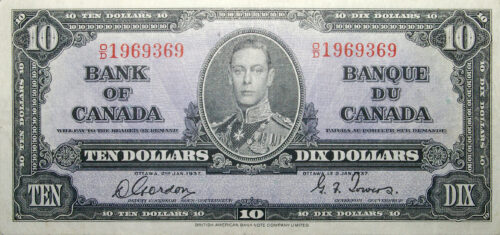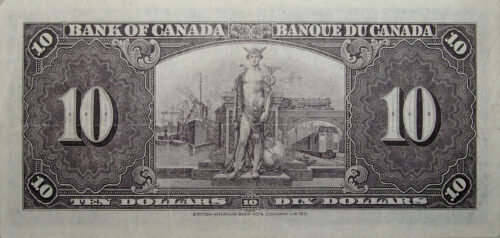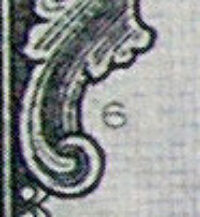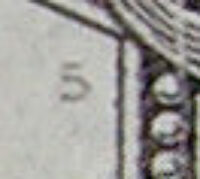P021
Paper, Crisp VF
165 x 73 mm
HISTORY: The British American Bank Note Company was formed in 1866, one year before Canada’s confederation, in Montreal, by a group of engraving and printing craftsmen. Their intent was to provide services to produce stamps, bonds, securities, and currencies to a budding nation. Their success rose and fell throughout the years, but when the Bank of Canada was founded in 1934, it provided the company with a steady demand for Canadian currency.
OBVERSE: In 1937, the Bank of Canada issued a new series of currency featuring the cameo portrait of King George VI (Albert Frederick Arthur George, 1875‒1952). It is signed by the first governor of the bank, Graham Towers (1897–1975), who served from 1934 to 1955.
REVERSE: Front and center is a standing Mercury, loosely draped, wearing his winged cap and shoes and carrying a caduceus. Historically, Mercury is seen as the god of commerce, travelers, and transporters of goods. As such, in the background, we see a panoply of industrial activity: shipping, industrial rail, transportation, and air flight (the Trans-Canada Airlines had just been established) with a global reach. At this time, Canada was finally climbing out from under the devastations of the Great Depression and, apparently, needed to put a positive spin on the future with the design of this artistic currency bill.
The British American Bank Note Company employed a large staff of designers and engravers for their various products, however no initials are attributed to the design of this $10 note. On the obverse, about midway down the left side, tucked in an architectural scroll, is the number “6.” On the reverse, at the top right corner of the vignette, is the number “5.” Perhaps these are machine operator identifiers, or batch numbers.




